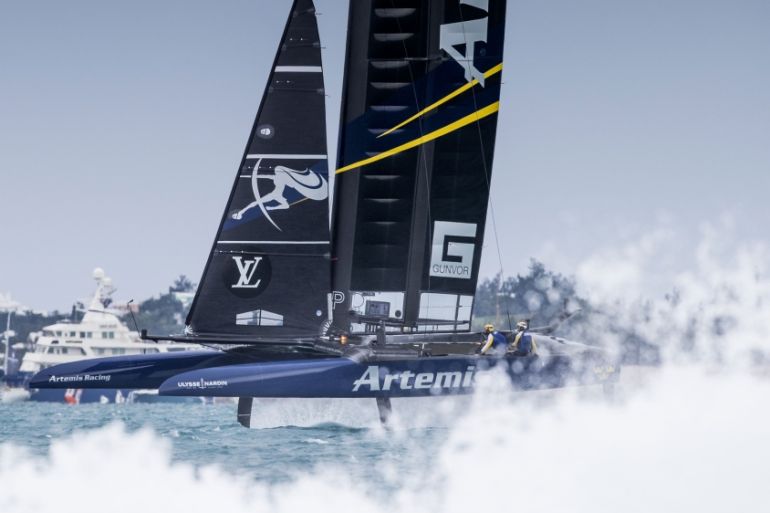Windy weather at America’s Cup in Bermuda
Bermuda is this year’s host of the big sailing regatta and so far, weather conditions have proved testing.

Most sporting events around the world are impacted by the weather conditions.
Too many times we have heard the phrase “rain stops play” at the annual Wimbledon tennis tournament from London, England, and given the climate in the UK and the fact that the championships began back in 1877, it must have been uttered many times.
Keep reading
list of 4 itemsAfter the Hurricane
World’s coral reefs face global bleaching crisis
Why is Germany maintaining economic ties with China?
However, there aren’t many sporting events that need specific and precise weather conditions in order to be able to proceed.
Sailing, and in particular the America’s Cup, is one such event where the direction and strength of the wind is a key factor in determining the success of this regatta.
The America’s Cup is the oldest international sporting trophy, founded in 1851. The location of this annual spectacular is carefully selected, with the first regatta of 1851 taking place in the waters around The Isle of Wight in the English Channel.
The Isle of Wight is an island of approximately 390 square kilometres, and benefits from variable winds as weather systems move through the English Channel, testing the skills and endurance of the most experienced sailing crew.
October 1987, not a year it hosted the America’s Cup, saw the worst storms and winds the island has ever seen, with wind gusts over 160km/h recorded, causing millions of pounds of damage and changing the face of the island countryside in some areas forever.
Typically, the strongest winds are reported along the southwest coast and are usually the tail end of Atlantic storms as they pass through the Channel.
This June is the 35th America’s Cup – the event is held every four years – and Bermuda is this year’s host, with teams from around the world competing through the iconic Great Sound.
Historical wind data indicates there should be racing conditions 90 percent of the time in June. Conditions are, as always, varied, increasing the challenge for the sailors.
The regatta begins at the end of May, culminating in the America’s Cup Match over June 18-19.
Since the beginning, the weather, and in particular the winds, have taken their toll on the teams participating, with strong, gusting winds capsizing the New Zealand team on Tuesday, June 6. The following day’s racing planned for June 7 was postponed due to the high winds.
Saturday, June 10 saw race day begin with light winds; there has to be a wind speed of 6-knot average in order for racing to take place. By the end of the day, the winds had increased considerably, testing the skills of the competing teams.
Sunday, June 11 was especially challenging in Bermuda’s Great Sound, with strong winds lifting the 15 metre catamarans clear of the water as the day of racing got under way.
By the end of the day, winds had dropped, challenging teams further.
And now sailing experts are saying the light air pattern currently in place across Bermuda could be a game changer, and if the winds stay below 12 knots, the teams have to change equipment and tactics once again.
The next three days calls for southwesterly winds under 10 knots and there is the possibility that winds could run below the necessary 6-knot average to begin a race.
It could well come down to the team who can race fastest for longest in the lightest wind strengths. If that is the case, the New Zealand team appear to have the edge.
But as ever, there is more than one computer model used to predict the forecast, so there is some question as to the strength of winds expected, but one thing is for sure, the winds will be the determining factor, making this regatta an event truly dependent on the weather.